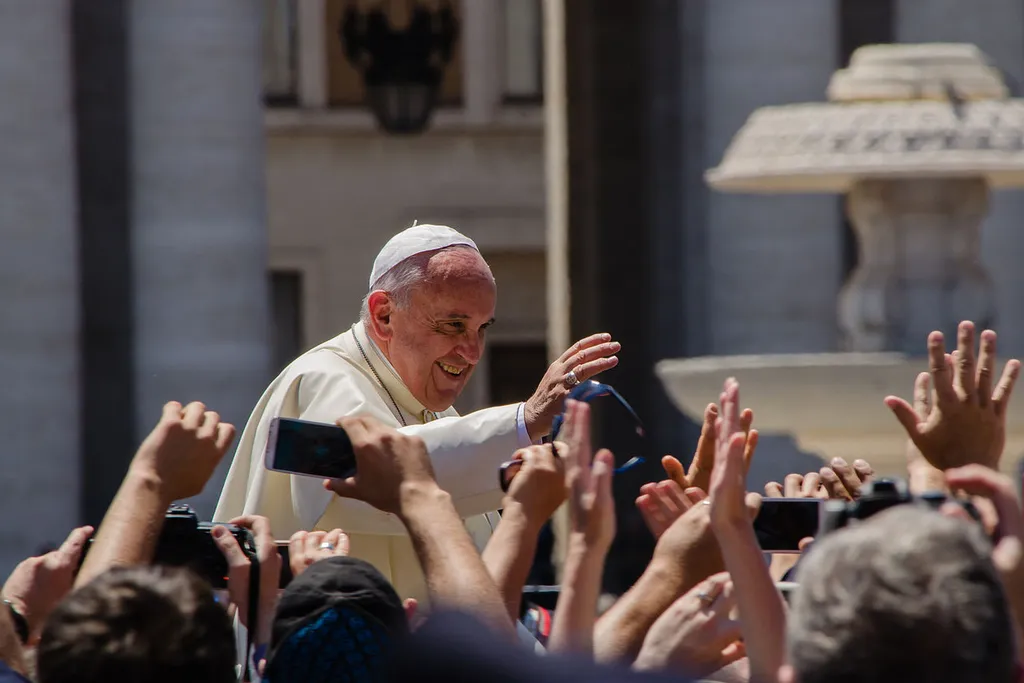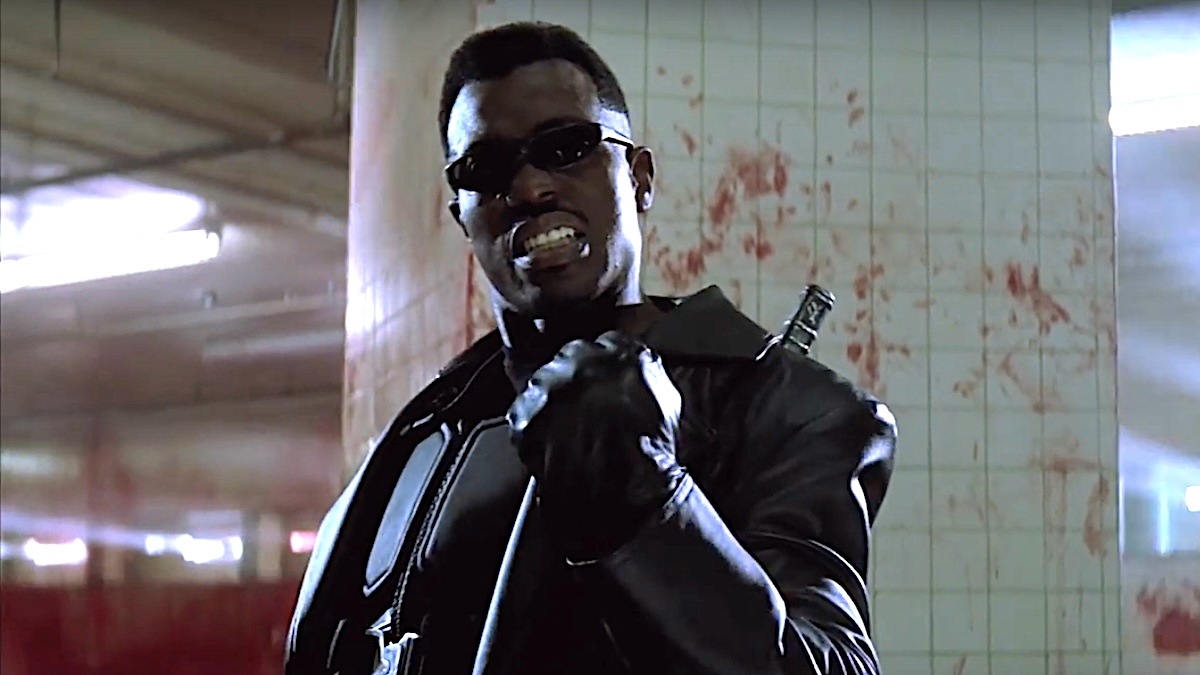
WWW.SMITHSONIANMAG.COM
Five Ways Pope Francis, Religious Leader Who Pushed to Modernize the Catholic Church, Was a Man of Firsts
Five Ways Pope Francis, Religious Leader Who Pushed to Modernize the Catholic Church, Was a Man of Firsts
The pontiff, who died on Easter Monday at age 88, strived to make the church more inclusive. But critics believed his reforms either went too far or not far enough
Christopher Parker and Meilan Solly
April 21, 2025 7:17 a.m.
Pope Francis greets crowds in St. Peter's Square in 2014.
Alfredo Borba via Wikimedia Commons under CC BY-SA 4.0
When Jorge Mario Bergoglio was 12 years old, he sent a love letter to a girl named Amalia, promising to buy her a house with a red roof and white walls when they eventually got married. Unfortunately for the lovestruck preteen, Amalia’s father refused to let the burgeoning romance continue. As Amalia later recalled, the last words Bergoglio said to her were, “If I don’t marry you, I’m going to become a priest.”
Thirty-one years later, in 1969, Bergoglio fulfilled this prophecy by becoming an ordained priest. Even then, he had no idea that he would ascend to the highest echelons of the Catholic Church, assuming leadership of the Holy See after Pope Benedict XVI resigned from office due to health issues in 2013.
Over the next 12 years, until his death at age 88 on Easter Monday, April 21, 2025, Bergoglio—now known by the papal name Francis—continually defied expectations, pushing the church to modernize even as he faced resistance from conservatives who believed his reforms went too far and liberals who argued the changes didn’t go far enough. The late pope rejected the traditionalism of his papal predecessors, instead emphasizing humility, charity to the poor, and outreach to marginalized groups and adherents of different faiths. Under his leadership, the papacy looked outward, considering how Catholic theology should be reinterpreted in the 21st century. Francis had survived a bout of pneuomnia earlier this year and was still recovering from the illness.
Pope Francis' 10-year legacy
Watch on
“Francis’ openness to revisiting, and even revising, church teachings—and to the disagreements that prospect calls forth—may be the most consequential development of his pontificate, the one that truly sets him apart from his predecessors,” wrote the New Yorker’s Paul Elie in 2023.
Francis’ headline-making actions included approving blessings for same-sex couples while upholding the church’s ban on gay marriage and advocating for women to assume leadership roles within the church while stopping short of allowing them to be ordained as deacons. Francis didn’t “change the letter of some church documents,” papal biographer Marco Politi told NPR’s Sylvia Poggioli in 2023. “But with his gestures or with his words, he pave[d] the way to new attitudes.”
As the Catholic Church prepares to elect a new leader, Smithsonian magazine is revisiting five ways that Francis, a pope of firsts, made history during his tenure.
First Latin American pope
When white smoke drifted out of the Sistine Chapel’s chimney on March 13, 2013, it signaled the election of the first non-European pope since the eighth century, as well as the first-ever Latin American pope. Formerly the archbishop of Buenos Aires, Francis was born in Argentina on December 17, 1936. The son of Italian immigrants, he grew up in Argentina’s capital city and worked as a nightclub bouncer and chemical technician before joining the priesthood.
Pope Francis marks World Day of the Poor with a lunch in Vatican City on November 13, 2022.
Alessandra Benedetti / Corbis via Getty Images
Francis continually sought out what he called “the global peripheries,” becoming the first sitting pope to visit Myanmar, Iraq and Mongolia, among other non-Western countries. The mass that closed out his 2015 visit to the Philippines is thought to be the largest papal event in history, with between six and seven million people in attendance.
Francis’ identity as the “New World Pope,” as Time magazine called him upon his election, was especially relevant in light of demographic shifts in the Catholic Church. A Vatican census found that the number of Catholics globally grew to nearly 1.39 billion by the end of 2022, with gains on every continent except Europe and Asia. Once a bastion of the religion, Europe’s Catholic population has continually declined in recent years.
First Jesuit pope
The Society of Jesus, more commonly known as the Jesuits, is an order of priests with a long, sometimes controversial history within the Catholic Church. In the centuries after its founding in 1540, the Jesuit Order became influential in many royal European courts. But Jesuits were expelled from almost all of those courts during the mid-1700s, and in 1773, Pope Clement XIV officially suppressed the order, issuing a papal brief that called for the society’s disbandment and the confiscation of all Jesuit property. It was only in 1814 that Pope Pius VII restored the order.
Francis was the first Jesuit to serve as pope, taking office nearly 500 years after the order’s foundation. His election came as a surprise to fellow Jesuits, as members of the order tend not to seek higher church offices. “Jesuits think of themselves as servants, not authorities in church,” Friar Federico Lombardi told reporters in 2013. Speaking with the Los Angeles Times’ Emily Alpert that same year, Frank T. Kennedy, then-director of the Jesuit Institute at Boston College, said, “It’s only when the Holy Fathers orders us to [accept church offices] that we accept.”
Jorge Mario Bergoglio (center), then a regional leader for Argentine Jesuits, celebrates mass with other Jesuits around 1976.
API / GAMMA / Gamma-Rapho via Getty Images
The Reverend James Martin, a Jesuit author and Vatican consultant, tells Smithsonian that Francis ascended through church offices “almost despite himself,” emphasizing humility from the beginning. In one of his first interviews as pope, Francis responded to the question “Who is Jorge Mario Bergoglio?” by saying, “I am a sinner.” As theologian Timothy Gabrielli wrote for the Conversation in 2023, the Jesuits’ founder, St. Ignatius, left behind spiritual exercises designed to help his followers “recognize oneself as a sinner, but—crucially—a sinner loved by God.” Gabrielli added that Jesuit thinking was apparent in Francis’ approach to papal leadership, which found him “reflecting on the deeper roots of brokenness in the world—and urging people toward fundamental change.”
First pope to issue an earth-focused encyclical
Media outlets labeled Francis’ predecessor, Benedict XVI, the “Green Pope” in recognition of his environmental activism. Benedict added solar panels to the roof of the papal audience hall and purchased carbon credits to help make Vatican City fully carbon neutral.
Francis took that focus worldwide during his papacy, issuing the first encyclical (a formal open letter to all of the world’s Catholic bishops) focused solely on the environment. The 2015 letter, titled “Laudato Si,” or “Praise Be to You,” discussed climate change through the lens of social justice and openly critiqued rampant consumerism.
“Caring for ecosystems demands far-sightedness, since no one looking for quick and easy profit is truly interested in their preservation,” the pope wrote in the letter.
In 2023, Francis followed up his 2015 encyclical with “Laudate Deum” (“Praise God”), a letter that took aim at climate change deniers and deemed global warming “one of the principal challenges facing society.”
A protester at the People's Climate March in 2017 holds up a sign with a quote from Pope Francis.
Dcpeopleandeventsof2017 via Wikimedia Commons under CC BY-SA 4.0
Francis devoted many of his efforts and writings to the poor, whom he predicted would bear the brunt of the effects of climate change. He held the church’s first World Day of the Poor in 2017 and used the annual event as an opportunity to remind Catholics to make a “social and political commitment to improving reality around us.” As Martin says, Francis’ views on environmental issues and social justice were inextricable.
“Working for a just distribution of the fruits of the earth and human labor is not mere philanthropy,” Francis said in a 2015 speech. “It is a moral obligation. For Christians, the responsibility is even greater: It is a commandment.”
First pope to say “gay” publicly
Francis’ relationship with the LGBTQ community was complicated, with the pope often sending mixed signals on the church’s stance on sexuality. He called for the decriminalization of homosexuality worldwide, endorsed same-sex civil unions, and declared that transgender people could be baptized and serve as godparents. According to Martin, Francis was the first pope to use the word “gay” in a public statement.
Martin says the pope’s message of “welcome, inclusion and treating people with compassion” marked a new chapter for a church that has historically antagonized the queer community. “Pope Francis changed the conversation around LGBTQ people in the church entirely,” Martin adds. He points to a 2013 statement made by Francis, who famously told reporters, “If a person is gay and seeks God and has good will, who am I to judge?”
Pope Francis (right) with Brazilian President Luiz Inácio Lula da Silva in 2023
Palácio do Planalto via Wikimedia Commons under CC BY 2.0
Under Francis, the Vatican issued a 2023 document allowing priests to bless same-sex couples, though the new guidelines stressed that marriage remains a sacrament between a man and a woman. Carl Hendy, a lapsed Catholic and nonbinary person, told NBC News’ Matt Lavietes that they felt the policy change was “performative” and “a lousy attempt from the pope to validate queer people.” Hendy added, “What I want to see from the Catholic Church is them taking accountability for how they’ve treated LGBTQ people historically and then promise to validate them unconditionally by recognizing their marriages, their relationships, their families, the same way they do heterosexual people.”
Francis’ efforts to welcome LGBTQ people into the church were often at odds with both his informal comments and church doctrine. He attracted criticism for using an anti-gay slur and suggesting that gay children should seek psychiatric help. The pope also upheld the Vatican’s official stance on LGBTQ issues, maintaining that gay people are “intrinsically disordered” and declaring that gay sex, while not a crime, remains a sin. In 2024, Francis approved a Vatican declaration that labeled gender-affirming surgery a grave violation of human dignity.
First female Vatican appointments
Another divisive aspect of Francis’ legacy is his elevation of women within the Vatican. This year alone, the pope appointed women to such prestigious positions as president of the Vatican City State and head of a major Vatican department. In 2021, he convened a global synod, or assembly of Catholic clergy and laypeople, that aimed to “make the church more inclusive and reflective of and responsive to the needs of rank-and-file Catholics,” according to the Associated Press’ Nicole Winfield. But while attendees discussed the need to promote women to leadership roles in the church, they failed to provide an answer on whether women can be ordained as clergy.
Pope Francis appoints Italian nun as the first woman to head a major Vatican office
Watch on
“What [Francis] has done so far to improve the condition of women in the church has only been for appearance’s sake,” Italian journalist Lucetta Scaraffia told Reuters’ Joshua McElwee in 2024. “It’s useless for women to wait for ‘the good pope’ who will recognize their true value.”
Progressive Catholics generally lauded Francis’ efforts to elevate women to positions of power. But many high church offices—the papacy, for one—remain reserved for ordained male priests. Overall, wrote Kate McElwee for the National Catholic Register in 2023, the cause of female priesthood did not advance far under Francis’ leadership. Even as the pope explored the possibility of allowing women to become deacons (ordained clergy who cannot celebrate mass or hear confessions but can baptize and preach), he seemed unwilling to budge on the tradition of male priests.
“The most generous explanation I can think of is that Francis does not believe the church is ready to answer this question,” McElwee wrote. Whether Francis’ successor will adopt a different stance on this and other pressing matters, guiding the church to either progressivism or conservatism, remains to be seen.
Get the latest stories in your inbox every weekday.
0 Commentarios
0 Acciones
14 Views












